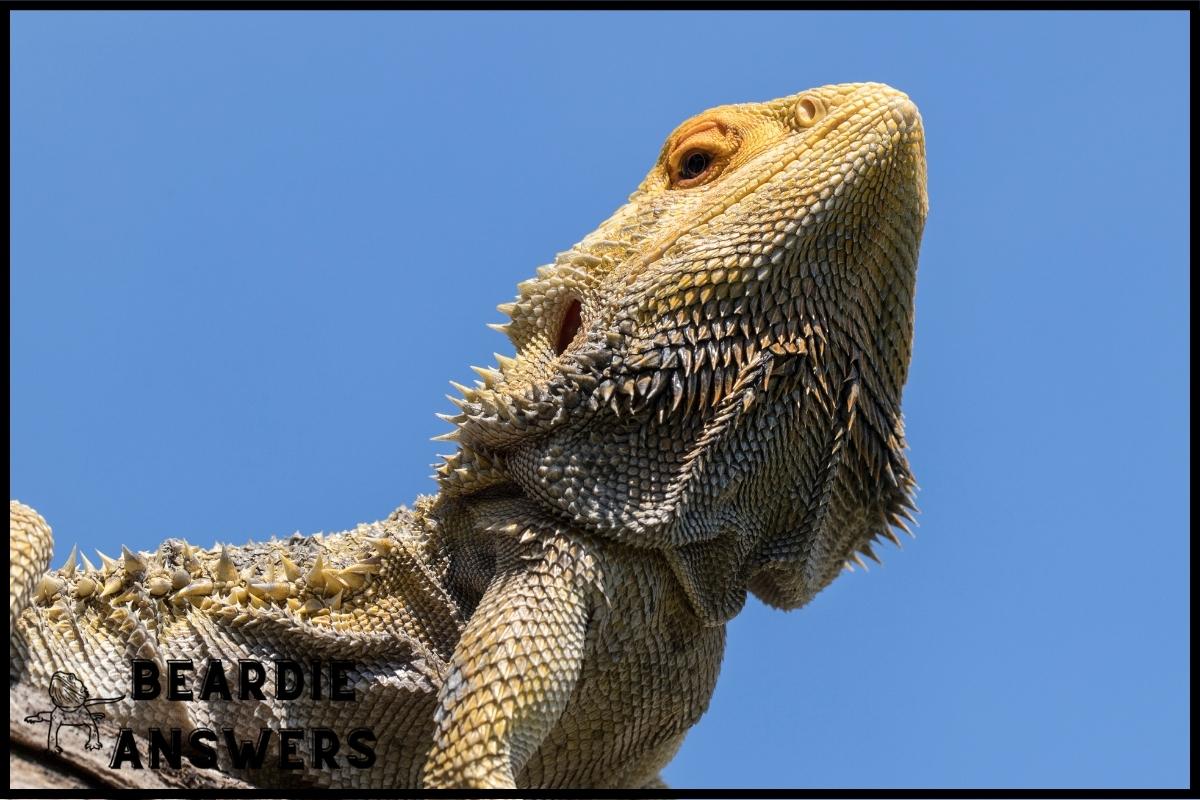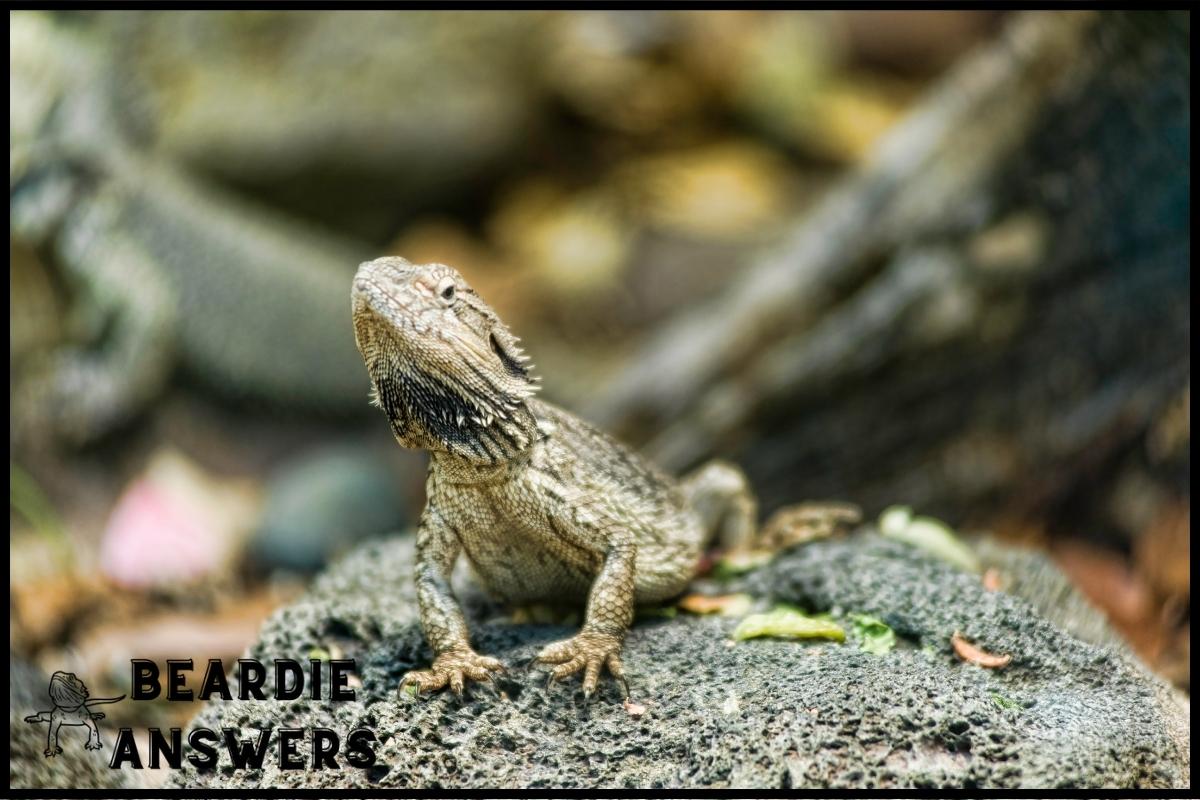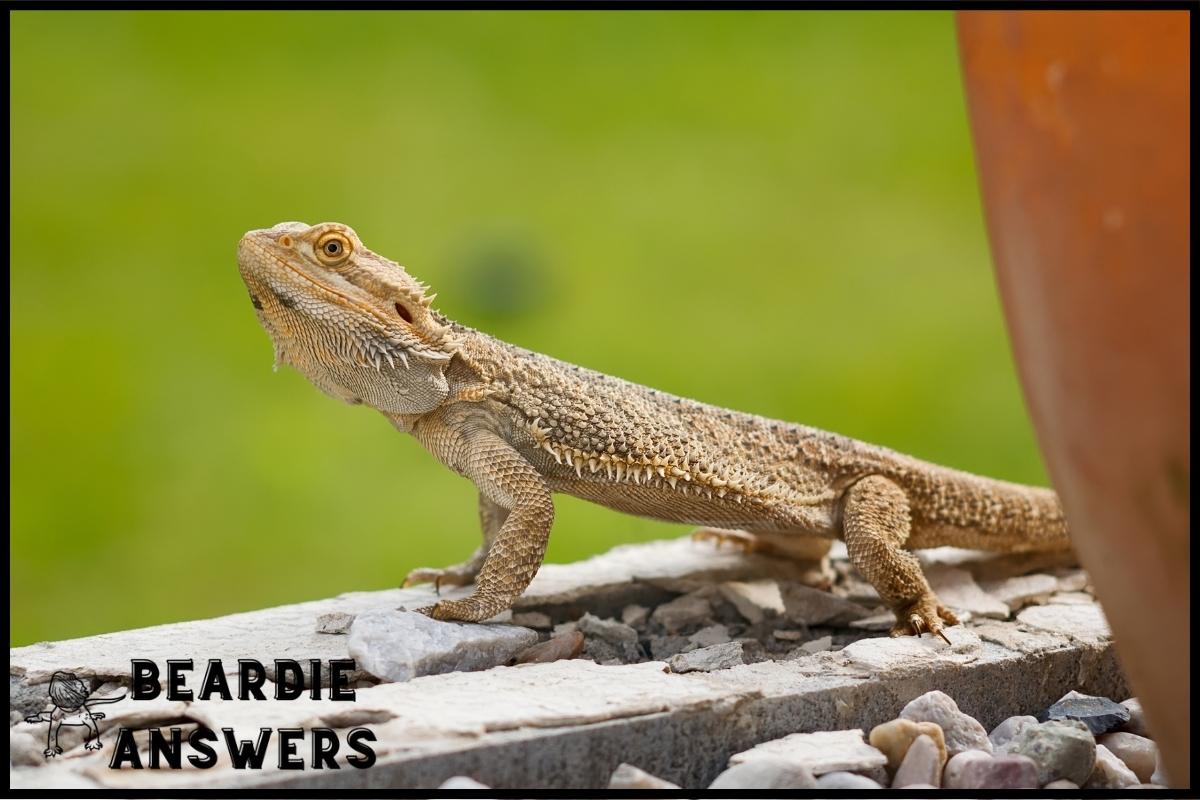Creating a simple homemade enclosure for a bearded dragon can be a cost-effective solution for pet owners. A large plastic storage tub can be repurposed by cutting out a section of the lid and attaching a mesh screen to allow for proper ventilation. Alternatively, an old piece of furniture such as a bookcase can be converted into an enclosure by adding shelves and covering the sides with mesh screen or acrylic panels.
What You'll Learn
Choosing The Right Size
When picking the size of your homemade bearded dragon enclosure, it’s important to consider both the space available and how big your pet will eventually grow.
Measuring the area where you plan to put the enclosure is a great place to start. After that, look for an enclosure large enough so that your pet can comfortably move around and explore its new home.
If you’re repurposing furniture into a habitat, make sure there are no sharp edges or corners on which they could injure themselves. It should also be easy to clean and aerated for proper ventilation.
Once you have chosen the appropriate size for your new reptile family member, you’re ready to prepare their home.
Preparing The Enclosure
Assembling a homemade bearded dragon enclosure is like putting together a puzzle. First, you need to research the materials that will make up your custom habitat and select those that best suit your pet’s needs.
Start with finding an appropriate sized plastic storage tub or piece of furniture, such as a bookshelf or armoire. Make sure it has plenty of space for all the items necessary to create a comfortable home for your lizard friend.
Once you have chosen the right enclosure and collected all the supplies needed, it’s time to move on to the next step in creating their new home: setting up the substrate.
Setting Up The Substrate
The substrate is an important part of creating a successful homemade bearded dragon enclosure. It provides insulation, moisture control and creates the necessary environment for them to live comfortably.
When selecting a substrate, it’s important to understand that there are several types available, each with their own pros and cons:
- Sand – can be difficult to keep clean, but still widely used by many due to its naturalistic look;
- Paper Towel/Newspaper/Kitchen Roll – inexpensive, easier to clean than sand but may not be as attractive;
- Reptile Carpet – more aesthetically pleasing option but may contain toxins and retain odors if not cleaned regularly.
No matter which type of substrate you decide on, make sure you take measures to ensure proper moisture control levels so your bearded dragon won’t become dehydrated or develop respiratory issues from too much humidity in the enclosure.
Now let’s move onto installing heating and lighting elements into the enclosure.
Installing Heating And Lighting
Let’s talk about the heating and lighting for our homemade bearded dragon enclosure;
specifically, what kind of heating and lighting we should choose.
Choosing Heating
Keeping your bearded dragon warm and cozy is essential to their health,so it’s important to get the heating right.
For heat sources choose either an overhead basking lamp or a ceramic heater, both of which should be thermostatically controlled for temperature regulation.
Setting up a thermometer in the enclosure will help you monitor temperatures throughout the day, so you can make sure your pet stays healthy and happy!
Choosing Lighting
Once you have the heating sorted, it’s time to think about lighting.
You’ll need a UVB bulb in order to provide your bearded dragon with the right amount of ultraviolet rays for their health and wellbeing. Make sure you pick one specifically designed for reptiles, as this will ensure that they get all the benefits without any risks.
It’s also important to create an appropriate basking area – this is where your pet will be able to bask under the light and absorb heat from the lamp above them. Having the correct placement and wattage here is essential for good health, so make sure you do your research before buying anything!
Finally, once everything is set up correctly, regular monitoring should become part of your daily routine.
Providing Adequate Ventilation
Now that heating and lighting have been installed, it’s time to make sure the enclosure is well-ventilated.
Adequate ventilation is essential for your bearded dragon’s health; proper airflow helps keep temperatures consistent throughout the enclosure and allows air exchange with the outside environment.
When considering how much ventilation you should create in your homemade enclosure, there are a few factors to consider.
First, it’s important to decide where you want to place the vents – some people prefer two on either side of the tank while others opt for one large vent at the top or rear of their enclosure.
Secondly, you’ll need to measure out how big each vent should be depending on your desired temperature control goals.
This can range from small holes that allow for minimal air flow up to larger openings for more significant circulation.
Generally speaking, having multiple smaller vents is better than just one large one since it provides more flexibility when adjusting temperatures within the enclosure.
Once you’ve determined what type and size of ventilation you’re looking for, it’s time to install them into your homemade bearded dragon enclosure.
Be sure to use appropriate materials such as window screen mesh so that no debris or other things can get inside and harm your beloved pet!
With everything set up correctly, now all that’s left is adding furniture and accessories which will help provide enrichment and comfort for your scaly friend.
Adding Furniture And Accessories
Furniture and accessories can be a fun way to add flair and functionality to a homemade bearded dragon enclosure. From comfortable couches to cozy hideouts, there are many options for creating the perfect terrarium for your pet.
When adding décor, it’s important to consider both the aesthetic appeal of the items as well as their practicality. A couch or mat is great for providing comfort during basking time, while branches provide exercise opportunities and create an interesting landscape. Additionally, various rocks can be used to help regulate humidity levels and create hiding spots within the enclosure.
To ensure that your beardie feels safe and secure in its new home, creating multiple hideouts such as caves, huts, logs, or burrows is essential. Not only will this give them plenty of places where they feel protected from predators but also offer mental stimulation thanks to all the exploring possibilities!
Be sure not pick anything too large since dragons may try to fit themselves into tight spaces which could lead to injury or death if done incorrectly. With these few tips you’ll soon have your own personalized reptilian paradise ready for use!
Conclusion
Creating a homemade bearded dragon enclosure is an exciting and rewarding experience. With the right supplies, you can create a safe space for your pet that meets all their needs.
By following these steps, you’ll be well on your way to creating the perfect home for them.
Do you have what it takes to design a cozy yet functional environment? If so, why not get started today!
You may find that designing an enclosure for your bearded dragon brings out your creative side – plus, you’ll know exactly how much love and care went into its construction.

Hi! My name is Bryan, I am the “one behind the words” here are BeardieAnswers.com. I believe that providing quality care and nutrition is the best way to ensure the health of your pet. Every beardie is special and deserves the best care and attention. If you have questions about your bearded dragon, please don’t hesitate to ask! View My Full Author Page




